If you wish to improve and get sick frags one after the other, you may want to invest your time in things like muscle memory, reaction time, tracking, etc. This goes double for games like Valorant because you aren’t only dealing with typical gunplay but also abilities. With that said, I will provide you with my tips for improving your aim for Valorant.
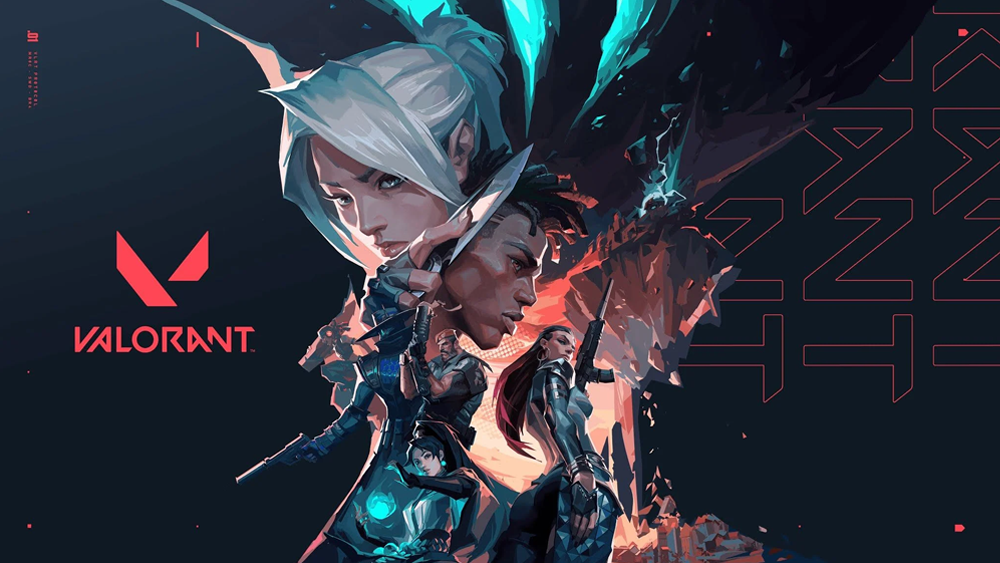
Author’s note: I am not a Valorant Professional nor a High ranking player; I have my fair share of FPS games such as Seige and CS:GO, so I can give my personal input on how one can improve their aim.
We previously wrote the “7 Tips to Improve Your Aim in FPS“, which covered things like equipment, mouse sensitivity, and practice ranges. This is why I will cover the importance of mechanics such as strafing, stutter-stepping, movement, crosshair placement and etc.
Table of Contents
Most of you may already know this, but for those who don’t, crosshairs are the player’s indicator that shows where the bullets will go—some sort of guide. With that said, each crosshair can be customized differently in accordance with the player’s preference. So it can be ridiculously gigongous or overly tiny—whichever suits you. I, however, would advise choosing a crosshair that can be easily seen amongst different colored backgrounds, such as your default green or purple. Additionally, I would also recommend a crosshair that is large enough to show the pixel image of the player’s head when aiming towards it.
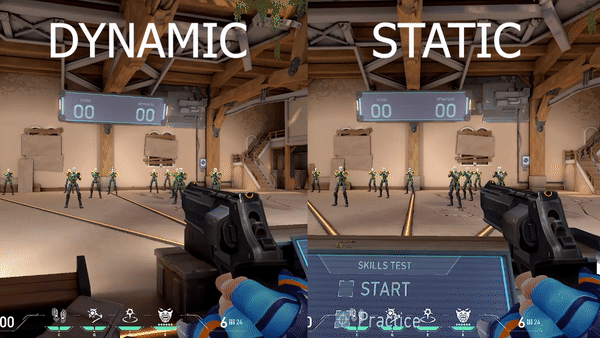
Should I go Static or Dynamic? A static crosshair does not expand when the player either moves around or shoots. A dynamic crosshair is the opposite of this and displays where the bullets can possibly go. There is a ton of debate revolving around this, but I personally would urge people to try out a dynamic crosshair. Why? Although distracting, it allows the player to see how accurate their shot will be. If you practice long enough, players will be able to understand when it is the best time to shoot and when their gun is most accurate.
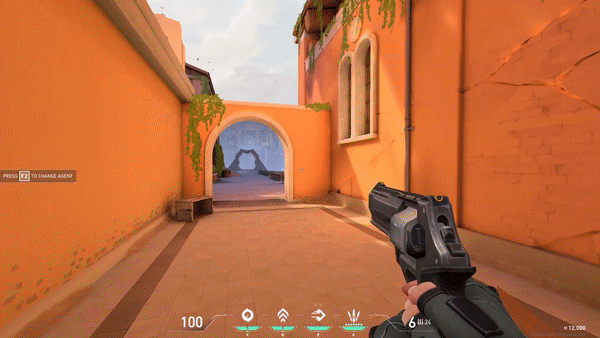
Movement goes hand in hand with your crosshair, when it’s dynamic because it allows proper positioning that places you at an advantage over the enemy. For the case of Valorant, this is doubled down, especially with operators that have dashes like Jett who can propel herself in the air for a cheeky kill. With that in mind, I highly suggest getting accustomed to at least two characters to fully maximize your familiarity with the game and its operators.
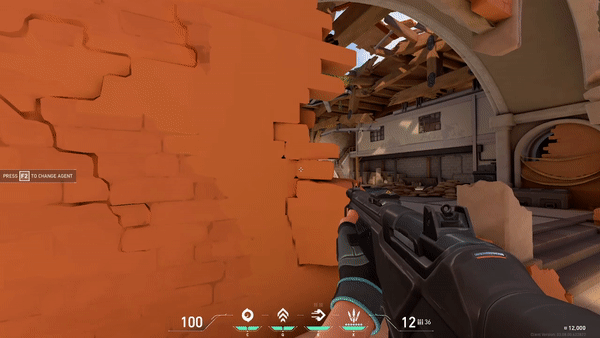
Ever had a game where your enemy quickly peeked a corner and just domed you? Well, that my friend is your jiggle peek and it required a mechanic called counter strafing. Counter strafing is the art of quickly going in the opposite direction of where you were initially going. A simple explanation to this is pressing “D” suddenly after holding “A”. This allows your crosshair to quickly reset and give players a short window for an accurate shot. This mechanic is hard to master but will have your enemy calling hacks when done successfully.
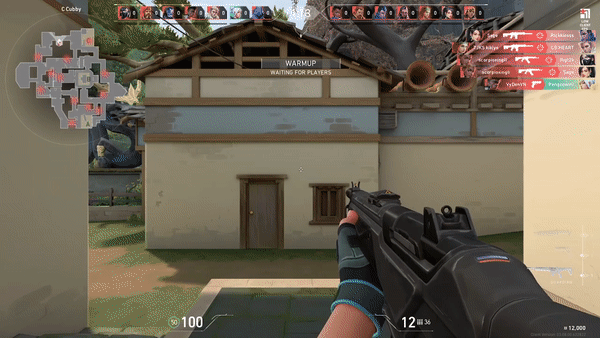
So you got the movement down, you got your “A” and “D” fingers warmed up—next up is crosshair placement. This is sometimes glossed over sometimes but having good crosshair placement will make your life easier when adjusting to enemies. To achieve this, you must be aware of the maps layout and where enemies can possibly come from. If your guess is right, all you need to shoot to get a frag. Having to adjust less allows you to shoot more bullets while the enemy panics and readjust their aim.

Sometimes enemies randomly show up the opposite of where you anticipate them to be, and that is just the nature of the game—full of satchel jumps, dashes and teleports. This is why flicking is essential. Flicking requires a ton of muscle memory and reaction time, which can only be improved with practice. If you want a fun and funky way to improve your flicks, you can try out OSU which is a musical-beat clicker game. Playing this increases your reaction time and your flicks.
![]()
Normally, tracking involves you following your enemy’s movement in order to know where he can go next, but I see tracking as a way to prep muscle memory. For example, if an enemy walks around a corner without seeing you, you can track him for a bit while anticipating the next target. If the next enemy comes, you can quickly kill him and then move to your previous target. This involves flicking in a sense but the previous tracking allows your hand to memorize the movement of your previous target. When practiced a lot, you will be bagging yourself more double or even triple kills.
Once you have these fundamentals engraved into your system, you should be seeing an increase in performance. This however must be supplemented with appropriate practice, in-game like deathmatch or aim trainers. I would also recommend playing games such as unrated so that you can get accustomed to operator abilities—it is Valorant after all and everyone is trying to get a leg up to win the game. Don’t be sad if you lose games because it is part of the learning process.
And there you guys have it, a quick-tip guide on how to improve your Valorant aim. What do you guys think? What is your current rank in Valorant? Feel free to share your answers in the comments below. And don’t forget to have fun!

YugaTech.com is the largest and longest-running technology site in the Philippines. Originally established in October 2002, the site was transformed into a full-fledged technology platform in 2005.
How to transfer, withdraw money from PayPal to GCash
Prices of Starlink satellite in the Philippines
Install Google GBox to Huawei smartphones
Pag-IBIG MP2 online application
How to check PhilHealth contributions online
How to find your SIM card serial number
Globe, PLDT, Converge, Sky: Unli fiber internet plans compared
10 biggest games in the Google Play Store
LTO periodic medical exam for 10-year licenses
Netflix codes to unlock hidden TV shows, movies
Apple, Asus, Cherry Mobile, Huawei, LG, Nokia, Oppo, Samsung, Sony, Vivo, Xiaomi, Lenovo, Infinix Mobile, Pocophone, Honor, iPhone, OnePlus, Tecno, Realme, HTC, Gionee, Kata, IQ00, Redmi, Razer, CloudFone, Motorola, Panasonic, TCL, Wiko
Best Android smartphones between PHP 20,000 - 25,000
Smartphones under PHP 10,000 in the Philippines
Smartphones under PHP 12K Philippines
Best smartphones for kids under PHP 7,000
Smartphones under PHP 15,000 in the Philippines
Best Android smartphones between PHP 15,000 - 20,000
Smartphones under PHP 20,000 in the Philippines
Most affordable 5G phones in the Philippines under PHP 20K
5G smartphones in the Philippines under PHP 16K
Smartphone pricelist Philippines 2024
Smartphone pricelist Philippines 2023
Smartphone pricelist Philippines 2022
Smartphone pricelist Philippines 2021
Smartphone pricelist Philippines 2020